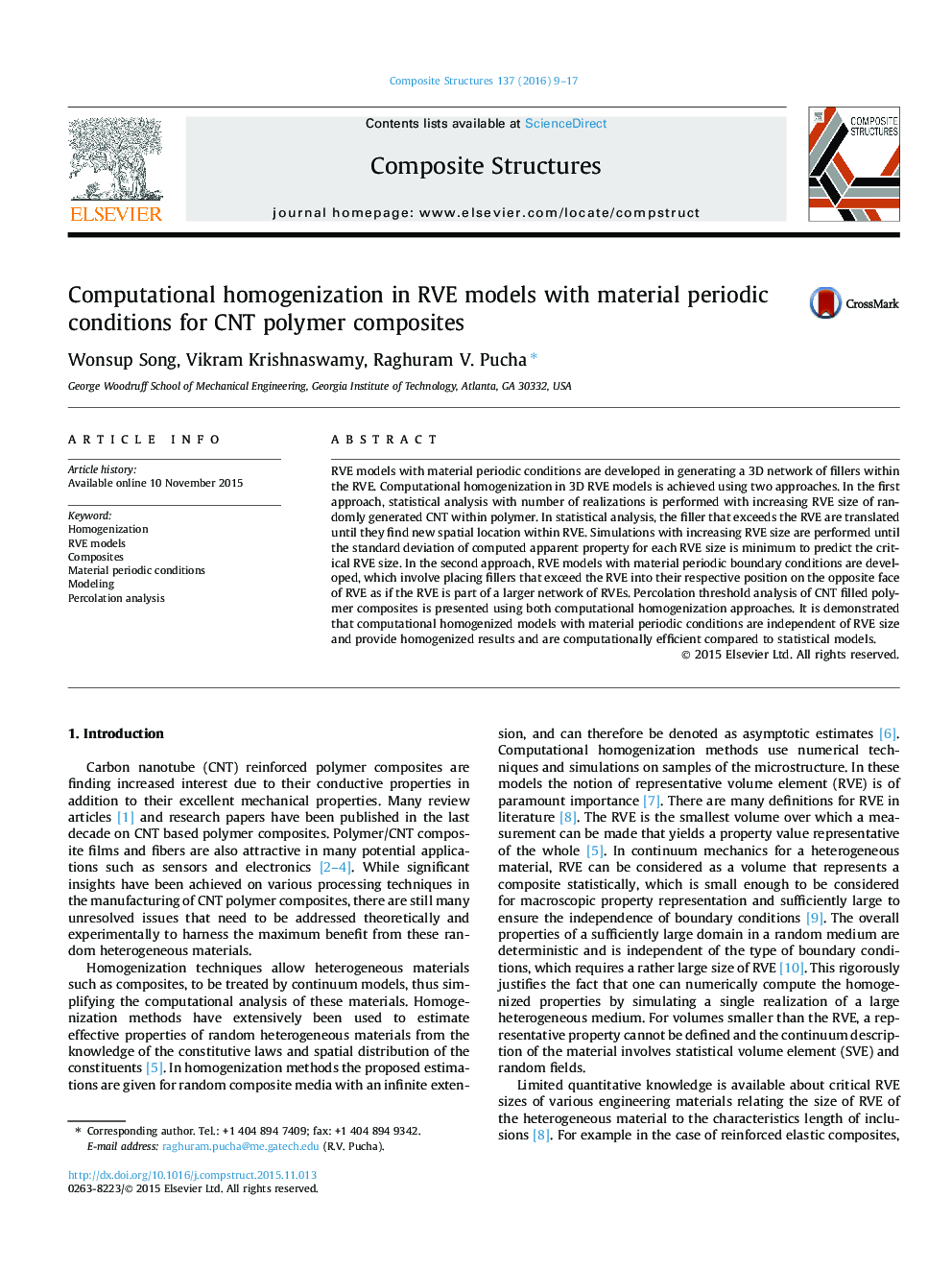| Article ID | Journal | Published Year | Pages | File Type |
|---|---|---|---|---|
| 6706250 | Composite Structures | 2016 | 9 Pages |
Abstract
RVE models with material periodic conditions are developed in generating a 3D network of fillers within the RVE. Computational homogenization in 3D RVE models is achieved using two approaches. In the first approach, statistical analysis with number of realizations is performed with increasing RVE size of randomly generated CNT within polymer. In statistical analysis, the filler that exceeds the RVE are translated until they find new spatial location within RVE. Simulations with increasing RVE size are performed until the standard deviation of computed apparent property for each RVE size is minimum to predict the critical RVE size. In the second approach, RVE models with material periodic boundary conditions are developed, which involve placing fillers that exceed the RVE into their respective position on the opposite face of RVE as if the RVE is part of a larger network of RVEs. Percolation threshold analysis of CNT filled polymer composites is presented using both computational homogenization approaches. It is demonstrated that computational homogenized models with material periodic conditions are independent of RVE size and provide homogenized results and are computationally efficient compared to statistical models.
Keywords
Related Topics
Physical Sciences and Engineering
Engineering
Civil and Structural Engineering
Authors
Wonsup Song, Vikram Krishnaswamy, Raghuram V. Pucha,
